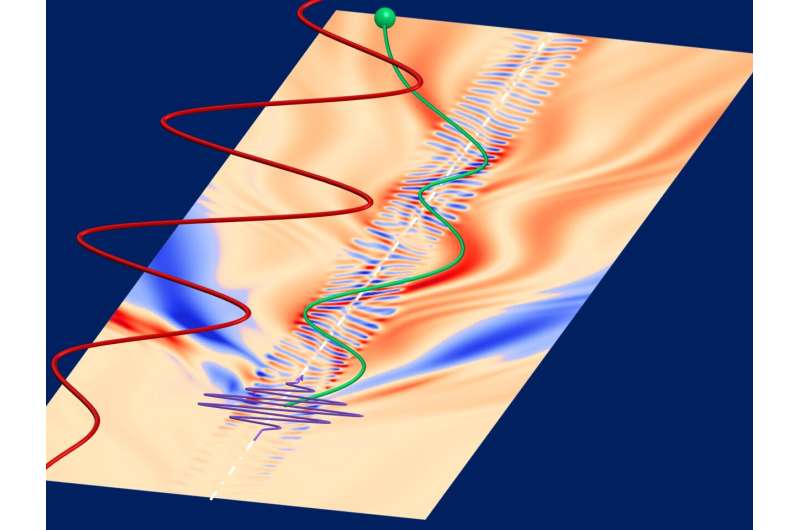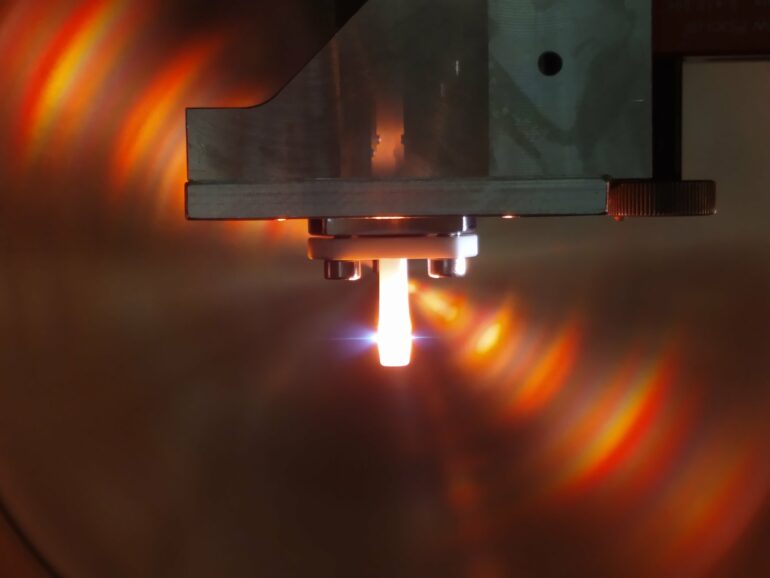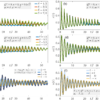The motion of an electron in a strong infrared laser field is tracked in real time by means of a novel method developed by MPIK physicists and applied to confirm quantum-dynamics theory by cooperating researchers at MPI-PKS. The experimental approach links the absorption spectrum of the ionizing extreme ultraviolet pulse to the free-electron motion driven by the subsequent near-infrared pulse. Their paper is published in the journal Physical Review Letters.
For this experimental scheme, the classical description of the electron motion is justified even though it is a quantum object. In the future, the new method demonstrated here for helium can be applied to more complex systems such as larger atoms or molecules for a broad range of intensities.
High-harmonic generation, namely the conversion of optical or near-infrared (NIR) light into the extreme-ultraviolet (XUV) regime, is fundamental to strong-field physics, since it is an extremely nonlinear process. In the famous three-step model the driving light field (1) ionizes the electron by tunnel ionization, (2) accelerates it away and back to the ionic core, where the electron (3) re-collides and emits XUV light if it recombines.
In a new experimental approach at the Max Planck Institute for Nuclear Physics (MPIK) in Heidelberg, physicists from the division of Thomas Pfeifer replaced the first step with an XUV single photon ionization, which has a twofold advantage. First, one can choose the time of the ionization relative to the NIR phase. Tunnel ionization would only happen in the field maximum. The extremely short XUV pulse is only hundreds of attoseconds long providing a controllable and well-defined start of the clock. Second, the NIR laser can be tuned to low intensities where tunnel ionization is practically not possible any more. This allows the study of strong-field-driven electron re-collision in a low-intensity limiting case.
The technique used here is attosecond transient absorption spectroscopy (Fig. 1) together with the reconstruction of the time-dependent dipole moment, which was developed before in the group around Christian Ott for bound electrons. Here, this technique is extended to free electrons, and it connects the time-dependent dipole moment with the classical motion (trajectories) of the ionized electrons.
“Our new method, applied to helium as a model system, links the absorption spectrum of the ionizing light to the electron trajectories,” explains Ph.D. student Tobias Heldt. “This allows us to study ultrafast dynamics with a single spectroscopic measurement without the need of scanning a time delay to compose the dynamics frame by frame.”

Fig. 2: Illustration of the classical trajectory (green) with multiple recollisions and changes of the quantum wave packets (red/blue background) for a NIR (red) laser-driven electron emerging from XUV (violet) ionization of helium. © MPI für Kernphysik
The measurements show that for some experimental parameters the probability of driving the electron back to the ion can be higher if the light wave is not linearly but circularly polarized. This is a counterintuitive finding that has however been predicted by theorists. Classical simulations performed by Jonathan Dubois and Gabriel M. Lando at the MPI-PKS in Dresden justify this interpretation, i.e. re-colliding periodic orbits. Fig. 2 illustrates a classical trajectory (green) versus the changes in the quantum probability distribution of the electron wave packets (background) emerging from the atom after ionization by the XUV pulse (violet) and driven by the NIR field (red).
Every time the electron (re-)collides with the helium atom (green line intersects the white center line) it leads to a characteristic modification and increase of the time-dependent atomic dipole (result of the quick red-blue oscillation near the center line), which can be picked up by an attosecond absorption-spectroscopy experiment.
Group leader Christian Ott is optimistic about the future potential of this new approach. “In general, our technique allows to explore laser-driven electron motion in a new lower-intensity regime and it could further be applied on various systems, e.g., for studying the laser-driven electron dynamics within larger atoms or molecules.”
More information:
Tobias Heldt et al, Attosecond Real-Time Observation of Recolliding Electron Trajectories in Helium at Low Laser Intensities, Physical Review Letters (2023). DOI: 10.1103/PhysRevLett.130.183201
V. Stooß et al, Real-Time Reconstruction of the Strong-Field-Driven Dipole Response, Physical Review Letters (2018). DOI: 10.1103/PhysRevLett.121.173005
Provided by
Max-Planck-Institut für Kernphysik
Citation:
Electron re-collision tracked in real time (2023, May 8)



